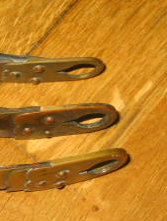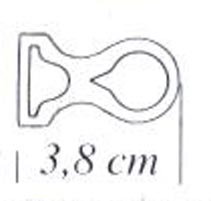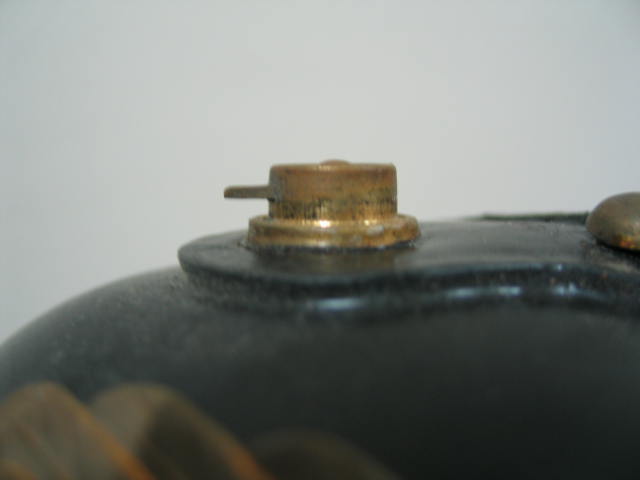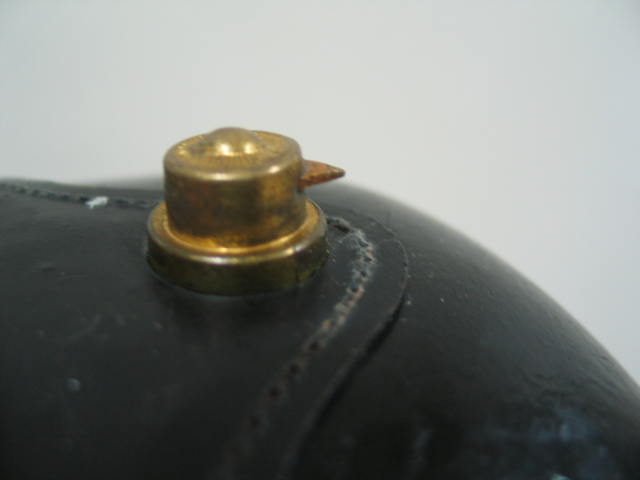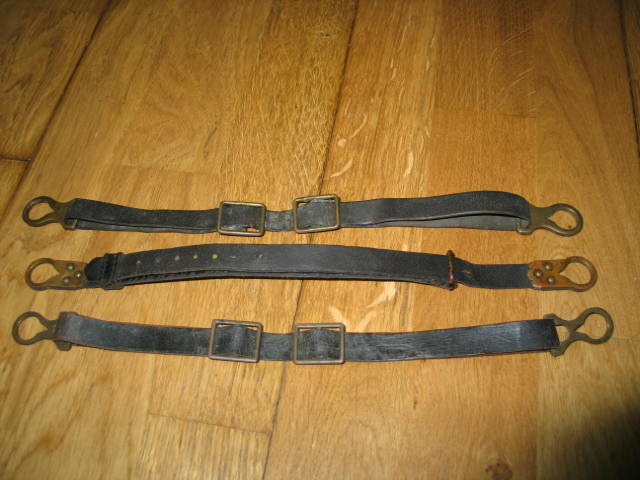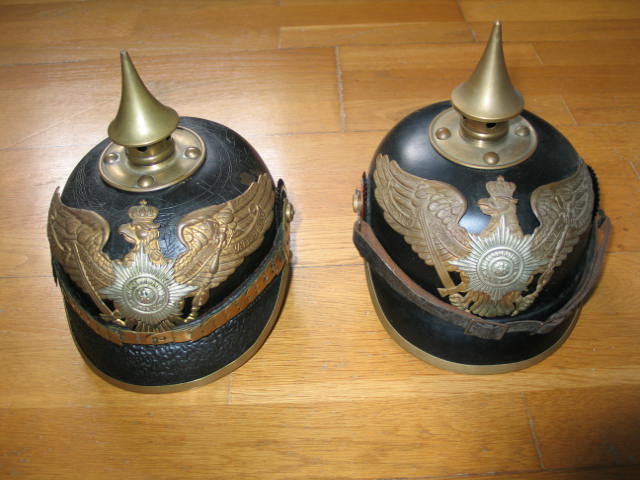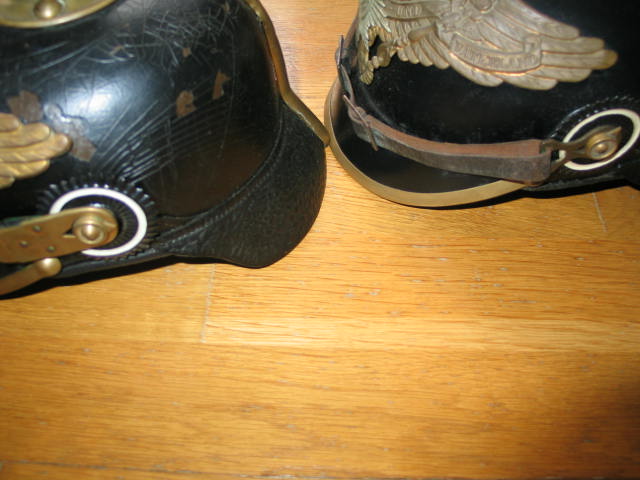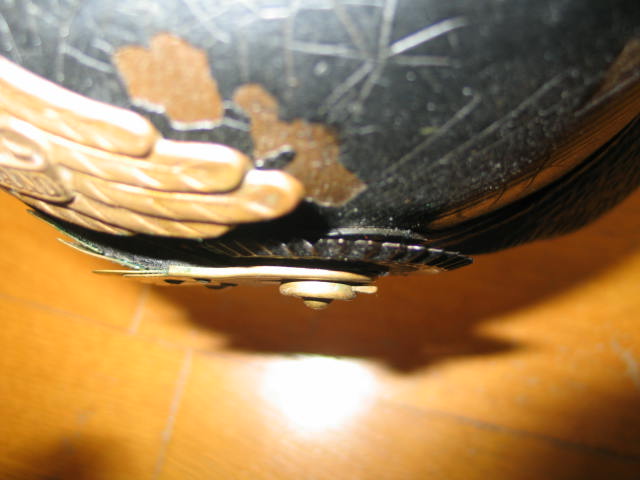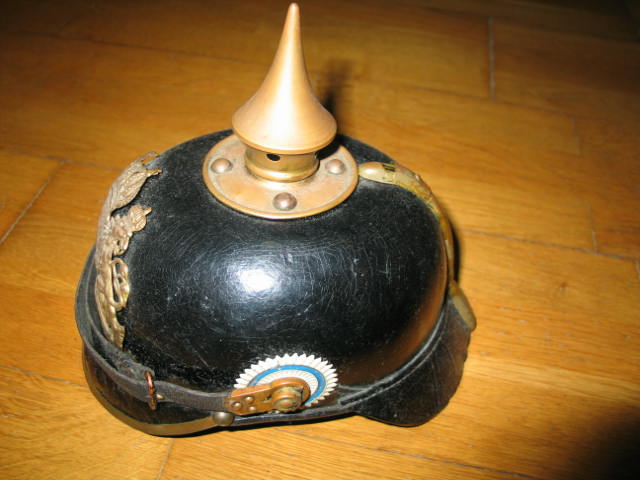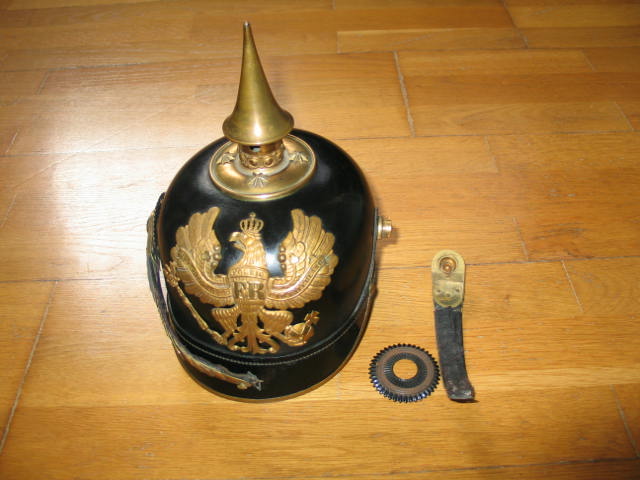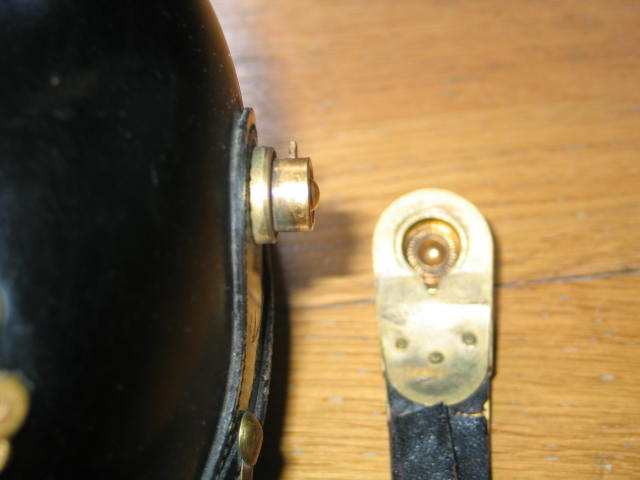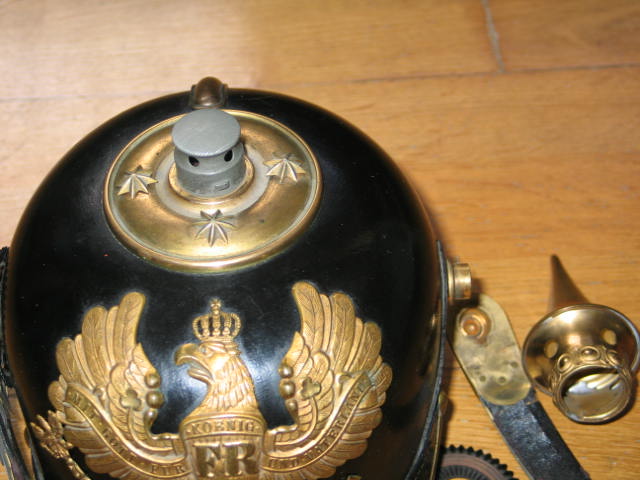M91 CHINSTRAPS & SIDE POSTS
Joseph Robinson, and Amy Bellars
February 12, 2005.
Introduced in 1891, the M91 chin strap is by far the most common chin strap on helmets. They’re mostly associated with issue helmets, and leather chin straps. But officers and chin scales also were used with the M91 side posts. This was an incredibly clever design that allowed a simple hook to twist onto the helmet and stay in place. Cockades were held in place behind these strap hooks. As it turned out the frugal Germans use the same straps for the M16 helmet. The design was just that good.
A Canadian collector named Tony discovered that there was a difference between the thicknesses of different hooks. This is documented nowhere that I know of. With all the Pickelhaube references no one caught this. Trial and experience of this collector proved to uncover a difference that previously had been undocumented. We will now take this idea a bit further.
1mm thick chinstrap hooks are the most commonly seen chinstrap hooks. They are manufactured using brass, nickel and steel. They are found only on leather chinstraps meant for issue pickelhaubes. During the war officers also used to leather chin straps exclusively in the field. These are generally considered the ones used for foot troops.
These 1mm chinstrap hook fit into the normal M91 side posts of most foot pickelhaubes. When we say fit, we mean fairly snugly. The cockade that rests behind the mount or side post, does not wobble. So the area of fit between the hook and a side post is approximately 1 mm.
There were also identical hooks, 3.8 cm long, that were 3 mm wide. The side posts were thicker also to accommodate the fastening of a thicker hook.
This is a comparison of three different chin straps, made of leather with different kinds of hooks.
Here is an example of a 1 mm chin scale and a 1 mm leather strap.
You can see how snugly the M 91 hook, holds the cockade.
Bavarian helmets pose an interesting quality. The M91 hooks and side posts are all 3 mm. This is an observation based on example, and there are probably differences and exceptions. Shortly after the start of the war, all officer, chin scales in Bavaria became convex regardless of branch. These obviously required a 3 mm post if they had M91 type hooks.
Officers did indeed have M 91 posts. These are called M15 helmets and similar to the enlisted M15 helmet, they had a bayonet twist off Spike. They had a faux rosette on the side that covered the actual and 91 post itself. An easy way to tell if an officer’s helmet is an M15 type is to look at the chin scales themselves. M91 type chin scales have the three dots on them. Just like in the picture above.
Conclusion.
We are quite positive that there will be a lot of additions and changes to this. Ideas will continue to evolve, and some original notions will prove false. It seems as in the Pickelhaube game there are exceptions to almost every rule. Finding a period source on this will probably be as impossible as finding it mentioned in any modern reference. How fun collecting can be!

